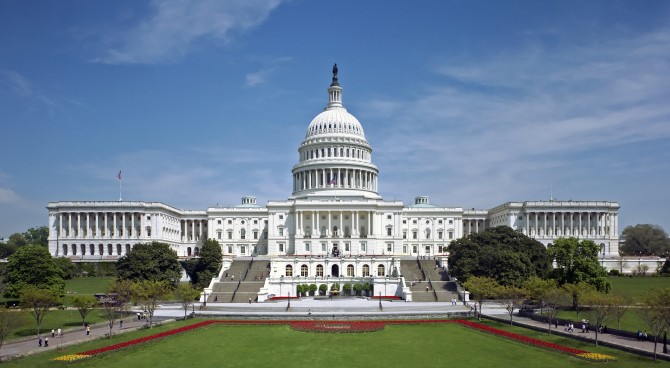The growth of industry disrupted old economic patterns but produced undreamed-of wealth.
ET
Most speculation about artificial intelligence has focused on its potential to kill jobs and on the policies that government might implement to control AI and cushion workers against temporary or permanent unemployment. Amid all the pessimism and calls for government protection, it’s important to remember that our only window into the future is the past. From the colossal changes wrought by the Industrial Revolution to the Digital Revolution of the last quarter-century, improvements in technology have created an array of jobs that far exceeded—in quantity and quality—the ones eliminated, elevating standards of living. History offers cautionary tales of how special interests and public fear can spawn government policies that delay progress and raise the cost of the transition.
For a medieval economy that had scarcely grown in 1,500 years, the Industrial Revolution in the U.K. unleashed a greater concentration of material blessings than ordinary people had ever experienced. From 1840 to 1900 real wages doubled, and the average lifespan increased by 22%, from roughly 41 years to 50. The population doubled, and employment rose by 80%.
In America growth during the Industrial Revolution was of biblical proportions. From 1870 to 1900 real gross domestic product tripled, the population and labor force roughly doubled, and output in manufacturing grew sixfold. Real per capita income rose by 110% between 1865 and 1910, while real wages of manufacturing workers increased an estimated 173%. Life expectancy rose by a quarter as inflation-adjusted costs of food, clothing and shelter dropped by roughly 50%.
During the Digital Revolution of the last quarter-century, U.S. real GDP rose by 66%. Bureau of Labor Statistics data show the extraordinary capacity of the American economy to absorb new technology. Since 2000 on average five million Americans have either been laid off or quit their job every month, but the economy has created 5.1 million better-paying jobs a month. This creative destruction isn’t new. In 1810, 81% of Americans worked in agriculture; today only 1.2% do. In 1953, 32% of Americans worked in factories. As real industrial production quadrupled, the share of the labor force in manufacturing declined to 7.8% in 2025.
No one perceived the creative destruction of the Industrial Revolution more clearly than Karl Marx. He saw the Industrial Revolution unleashing “more massive and colossal productive forces than have all preceding generations together” in “scarce one hundred years.” But Marx also saw the destruction of the old “instruments of production” tearing asunder “the motley feudal ties that bound man to his natural superior” and leaving “no bond between man and man other than naked self-interest and callous cash payments.” Unfortunately, Marx saw these changes not as the dawning of economic freedom and the ascent of mankind, but as the beginning of a new age of exploitation, a view that once impoverished and enslaved half the world and still exerts influence across the planet.
While Marx saw both the creative and destructive effects of the Industrial Revolution, the public response focused almost exclusively on the destructive. The British historian Arnold Toynbee saw the Industrial Revolution as “a period as disastrous and terrible as any through which a nation ever passed.” A room at the National Portrait Gallery in Washington has paintings of the titans of American industry as well as economic journalist Henry George. The label with George’s portrait quotes his judgment of the American Industrial Revolution: “The rich grew richer, the poor grow helpless, the middle class is swept away.”
In Britain, displaced textile artisans engaged in industrial terrorism by destroying machinery such as looms in the Luddite Uprisings. The government sent in troops, and Parliament imposed the death penalty to stop the destruction. In America, mechanization, economies of scale and mass marketing gutted local competitors by providing lower prices and higher-quality products. States and then the federal government sought to constrain large, efficient producers with Progressive-era regulations that for 90 years protected producers at the consumer’s expense.
In the 19th century the U.K. and U.S. governments were small and largely noninterventionist. Today both governments are large and filled with political interests eager to expand government’s role in the economy. Sen. Bernie Sanders has embraced the Luddites’ cause, calling for taxes on robots. President Biden issued an executive order imposing government oversight of the use of AI and requiring AI to promote unionism, improve the environment and advance “equity” and civil rights. The AFL-CIO president has said “working people are fighting back against artificial intelligence and other technologies used to eliminate workers or undermine and exploit us.” And this is only the beginning.
Almost every discussion of AI calls for extensive economic assistance for those who are displaced, and a growing chorus calls for a guaranteed income. These proposals show no awareness that while trade adjustment assistance, extended unemployment and our welfare system were no doubt well-intended, they have impeded workers’ transition to new jobs. Impediments are already being raised to AI. Mr. Biden launched a wave of antitrust actions against big tech that the Trump administration largely has continued.
American exceptionalism—in which Americans are more productive and have higher living standards—depends in part on our extraordinary ability to adjust to change. Europe makes it hard to lay people off, which constrains the ability to create jobs. In China, most industrial subsidies go to noncompetitive industries, not to the potential winners of the future.
Despite all the costs entailed in the transition, industrial technology and the market system accomplished what no benevolent king’s redistribution, no loving bishop’s charity, no mercantilist’s protectionism and no powerful guild ever did. It delivered a massive increase in productive capacity that continues to enrich our world. If we base our policies to cushion the AI transition on proven results rather than good intentions and let the market system develop and absorb AI technology, we can achieve a second economic miracle, which will enrich America and the world.
Mr. Gramm, a former chairman of the Senate Banking Committee, is a visiting scholar at the American Enterprise Institute. Mr. Solon is a senior fellow at the Hudson Institute.


